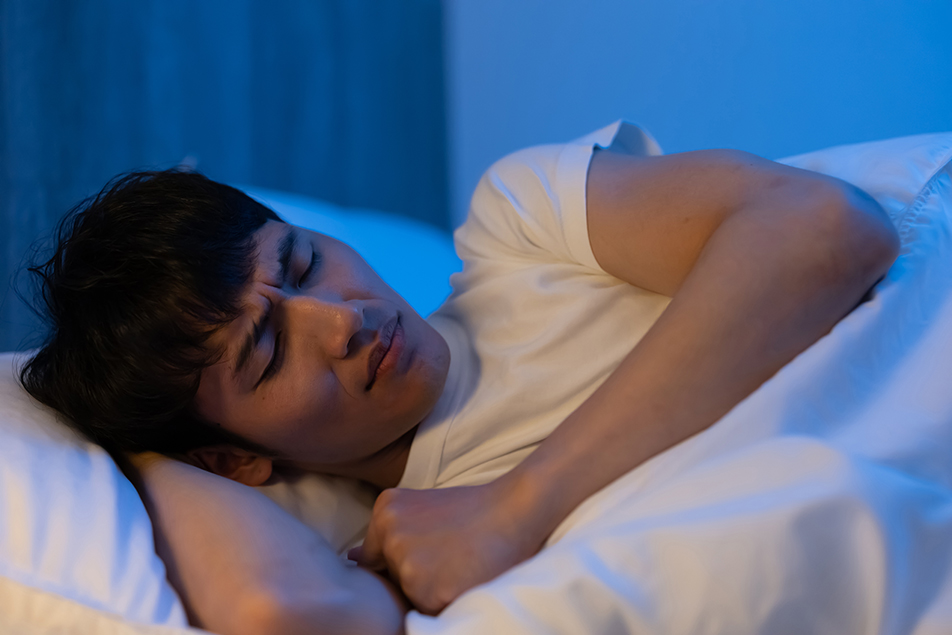
Sleep is essential. It’s a restorative process that allows our mind and body to recharge. Unfortunately, many people aren’t getting the rest they need, with roughly 70 million Americans suffering from chronic sleep problems. Srinivasan Devanathan, MD, PPG – Sleep Medicine, discusses some of the leading sleep disorders affecting the nation, possible red flags to watch for and where to turn for help.
Defining the problem
Sleep disorders, or sleep-wake disorders, typically involve problems with the quality, quantity and timing of your sleep. Anything inhibiting that, forcing a change in your sleep habits or resulting in the impairment of daytime functioning is a sleep disorder. For that reason, I think it’s important to highlight a few of the most common categories and general groups of sleep disorders that I often encounter as a Sleep Medicine provider.
Insomnia
Insomnia is a prevalent sleep disorder that can make it hard to fall asleep or stay asleep and even cause individuals to wake up too early or have difficulty falling back asleep. The exact cause of insomnia isn’t always clear, but it’s often associated with stress, anxiety, an irregular sleep schedule, poor sleep habits and hygiene.
Sleep apnea
Sleep apnea is generally a disorder in which a person’s breathing repeatedly stops and starts many times as they sleep. The two main categories we often see within Sleep Medicine are obstructive and central sleep apnea. Obstructive sleep apnea typically occurs when your throat muscles intermittently relax and block your airway during sleep. One of the most noticeable signs of this is snoring. Central sleep apnea, however, happens because your brain isn’t sending the proper signals to the muscles that control your breathing.
Restless leg syndrome
Restless leg syndrome is another disorder that can disrupt your sleep patterns. It is characterized by an irresistible urge to move your legs due to an uncomfortable, rarely painful, sensation. Those dealing with the condition often experience flare-ups when resting, sitting or lying down either in the late evening or at night, causing them to pace or walk around, making it difficult to get to sleep.
Central disorders of hypersomnolence
Central disorders of hypersomnolence is a phrase used to describe a variety of sleep-wake disorders in which a person experiences excessive sleepiness and may find it challenging to stay awake. Narcolepsy and hypersomnia are part of this group because both conditions are characterized by a symptom called hypersomnolence. Someone with hypersomnolence will have a strong urge to fall asleep during the day or sleep more than an average person. However, unlike other conditions, this excessive sleepiness isn’t due to disruption during the night. It can occur because of a chemical deficiency within the brain, an underlying disease or illness, a medication side effect, and more.
Parasomnias
Parasomnias are disruptive sleep-related disorders that happen during a state of sleep and waking. Examples often include sleepwalking, sleep talking, nightmares, night terrors, sleep-related eating disorders and sleep paralysis. While parasomnias are common, getting a restful night’s sleep can be extremely difficult. Another problem with these types of sleep disorders often boils down to safety. Some parasomnias can be dangerous because the sleeping individual is unaware of their surroundings and could hurt themselves or others.
Circadian rhythm disorders
Circadian rhythm disorders are a group of sleep disorders that deal with your body’s internal clock or circadian rhythm. When it’s out of sync with your environment, a disruption in the timing of your sleep can occur. Those dealing with a circadian rhythm disorder usually have difficulty either falling asleep, waking during the sleep cycle or are unable to fall back asleep after waking up too early. Jet lag is a common circadian rhythm disorder because of the sleep-wake cycle disruption that occurs during travel, especially across different time zones. Delayed sleep phase disorder is another common disorder often seen in adolescents and young adults where they go to sleep and wake up more than two hours later than a normal sleep-wake cycle. These individuals are known as “night owls” because they cannot fall asleep until 2 a.m. or later and then sleep as late as 3 p.m.
General red flags and warning signs
Sleep disorders affect millions of people, but most sufferers don’t realize they have a problem and often attribute their symptoms to getting older. For this reason, many sleep disorders often go undiagnosed. Although every condition is a little different and comes with its own symptoms, there are some common warning signs everyone should know. Some of those red flags can include, but are not limited to:
- Frequent headaches
- Fatigue or feeling tired
- Excessive daytime sleepiness
- Irregular sleep and wake cycles
- Increased movement during sleep
- Difficulty falling asleep
- Waking up frequently
- Irregular breathing
- Heart racing
When to seek help
If you or a loved one experience any of the above symptoms, despite having 7-8 hours of sleep, it could indicate poor sleep quality or a sign of an underlying sleep disorder. If you have concerns about your sleep health or suspect you might have a sleep disorder, please speak with your primary care provider and discuss the possible benefits of a consultation with a Sleep Medicine physician.



